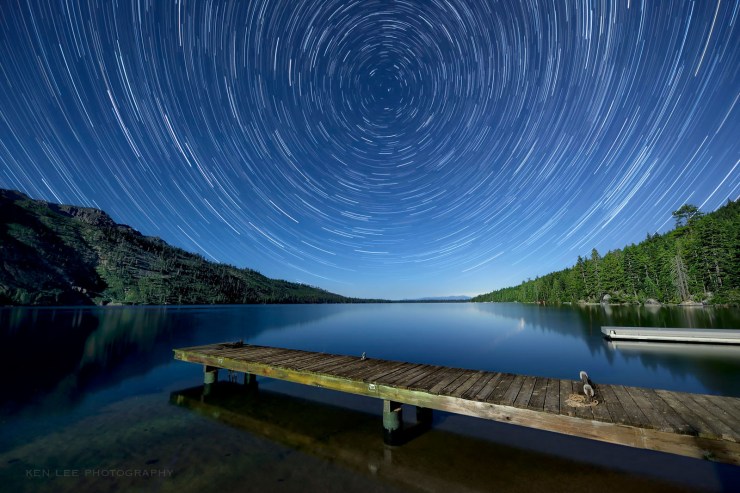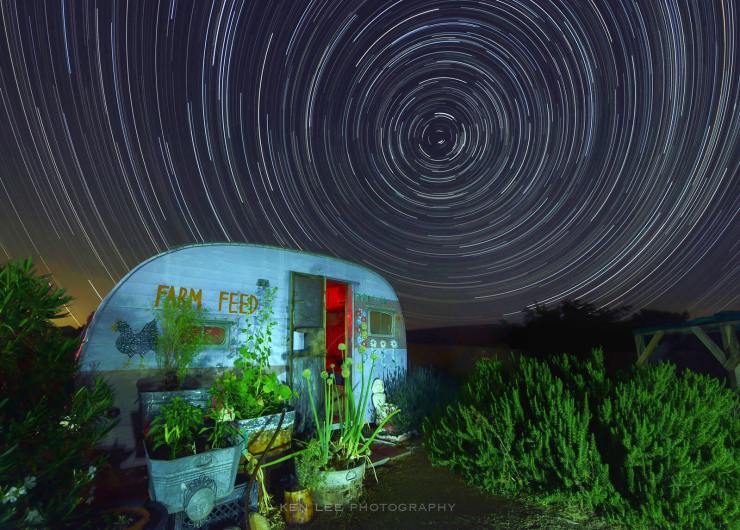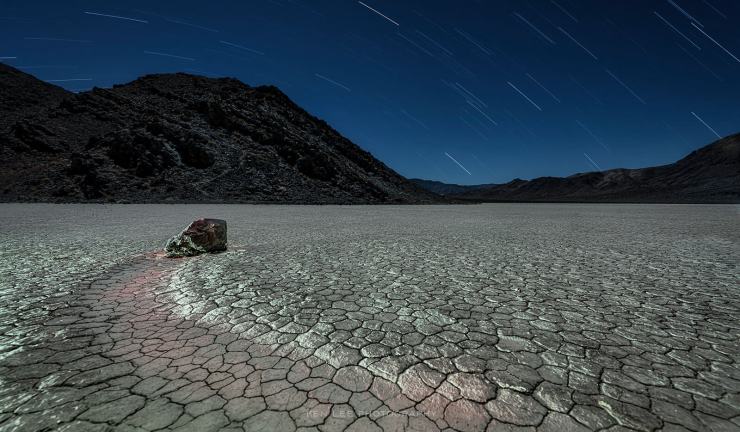What are some good camera settings for star trails in night photography? We try to make it easy for you and offer some tips for adjusting your camera.

Variables in camera settings
Some night photographers argue that giving camera settings for star trails night photography is useless. In a way, they’re right. There are so many variables. For instance, it depends on what kind of lens. The larger the aperture the lens has, the more light it lights in. The wider the focal length, the longer the amount of time you can set your camera’s exposure length.
Assumptions before giving camera settings
To stop the variables from spinning out of control, we are going to assume that you have a relatively modern digital camera and an ultra wide-angle lens with a focal length of about 14mm or 15mm since that seems to be the most commonly used.
Starting camera settings for star trails photographs
We will assume that you are going to photograph successive star trails photographs and then “stack” them later during post-processing using StarStax or Photoshop. You could begin with a setting of about 30 seconds at an aperture f/4 or f/5.6, and an ISO of 1600.
If it’s too bright or too dark, adjust your settings. Remember, I don’t know what the ambient light here is. Is it a half-moon? No moon? A full moon? Are there lots of streetlights or ambient light? I’m giving you a starting point from which to tweak.
This has so much variability that I considered not writing about it. You could create star trails with almost any setting within reason, but this is a somewhat “in-between” setting that you could try if you are not sure what to start with at first, and then adjust accordingly. This can be used when it is relatively dark but there is a sliver of a moon in the sky, but might be too bright if the full moon is out.

Adjusting from the beginning camera settings
Just like you would with a day photograph, all your camera adjustments are the same.
“My image is too dark!”
This is the most common thing people encounter. If your image is too dark, you can make it brighter by lengthening the exposure, opening the aperture (if that’s possible), and/or increasing the ISO.
Each has trade-offs, of course. Or increasing the ISO might introduce more noise into your image, although you could address that in post-processing by using Topaz Labs DeNoise AI or other noise reduction software.
“My image is too bright!”
This is less common, but can occur more frequently when doing star trails or photographing near a full moon.
Just like you would with day photographs, you can decrease the exposure time, make the aperture smaller and/or decrease the ISO.

Further information
I write a lot about night photography here. Check out the various articles. When you see a night photo, you can click on the image and see what the camera settings were. You can learn a lot from these by looking at the image, trying to figure out what the ambient light was, and figure out why that setting was chosen. After seeing a number of photos, you can also begin to see patterns emerging and begin to figure out why certain settings are chosen over others.
The primary thing to come away with for star trails is to try to get a single image that is exposed well After that, you can simply keep taking those photos in succession to create star trails images that you can easily stack later.
Tell your story with the second annual Visual Storytelling Conference!
Experience four days of interactive, online training sessions featuring a range of educational content with experienced photographers and content creators. This free event kicks off with a series of technical boot camps to build essential skills, followed by live, online sessions on photography, video, business and social media. Join live from March 10-13, 2022!
